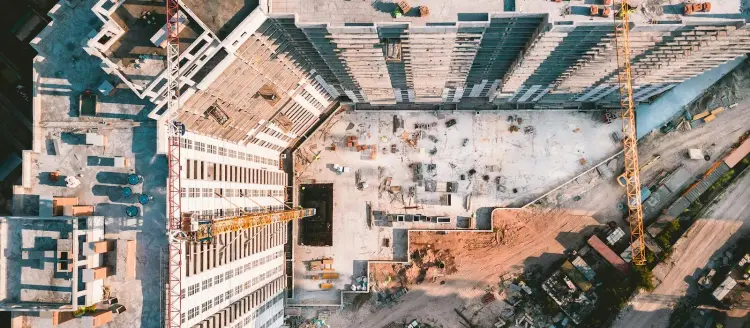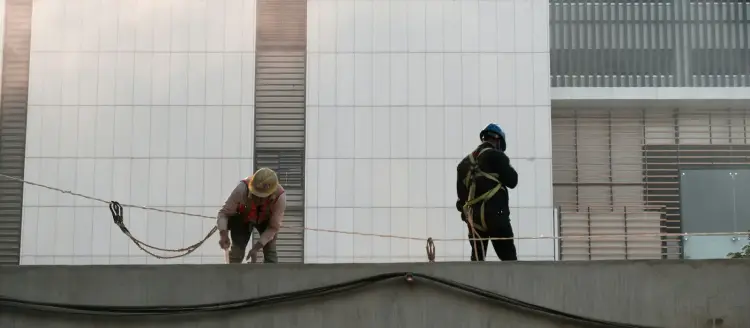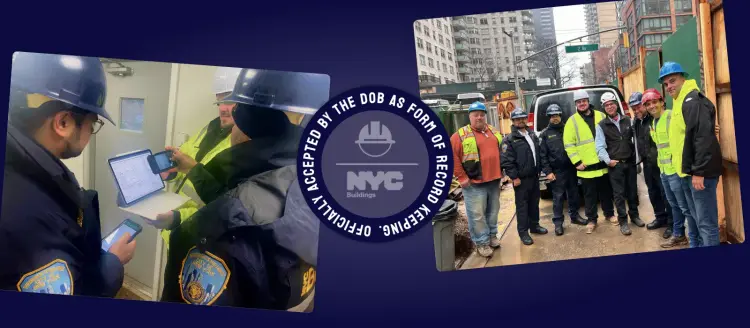Safety Best Practices
Stefano Braganti
Real-Time Workforce Visibility Ends Labor Drift & Rework
Labor drift, rework and schedule slips thrive when you can't see head-count live. Learn how smart turnstiles & dashboards give GCs real-time visibility.

Falls are one of the leading causes of fatalities in the construction industry. To address this critical safety concern, the Occupational Safety and Health Administration (OSHA) has established specific fall protection requirements. This guide will help you understand these requirements and ensure compliance on your construction site.
OSHA's fall protection standards are designed to prevent falls from heights, which can result in serious injuries or fatalities. Key requirements include:
Fall Protection Systems: Employers must provide fall protection systems, such as guardrails, safety nets, or personal fall arrest systems, when workers are exposed to fall hazards of 6 feet or more.
Training: Workers must be trained on the proper use of fall protection equipment and systems. This includes understanding how to inspect, don, and adjust equipment, as well as recognizing fall hazards.
Inspection and Maintenance: Fall protection equipment must be regularly inspected and maintained to ensure it is in good working condition. Damaged or defective equipment should be removed from service immediately.
There are several types of fall protection systems that can be used to comply with OSHA requirements:
Guardrails: These are barriers installed along the edges of elevated surfaces to prevent workers from falling. They must be capable of withstanding a force of at least 200 pounds.
Safety Nets: These are installed below elevated work areas to catch workers who fall. They must be installed as close as possible to the working surface and must be capable of absorbing the impact of a falling worker.
Personal Fall Arrest Systems (PFAS): These include a full-body harness, a connecting device, and an anchorage point. They are designed to stop a fall and limit the impact force on the worker.
To ensure effective fall protection and compliance with OSHA standards, consider the following best practices:
Conduct a Fall Hazard Assessment: Identify all potential fall hazards on your construction site and determine the appropriate fall protection measures.
Develop a Fall Protection Plan: Create a comprehensive plan that outlines the fall protection systems and procedures to be used on your site.
Provide Adequate Training: Ensure all workers are trained on the proper use of fall protection equipment and systems. Regular refresher training should also be conducted.
Regular Inspections: Conduct regular inspections of fall protection equipment and systems to ensure they are in good working condition.
Encourage a Safety Culture: Foster a culture of safety where workers are encouraged to report hazards and take an active role in maintaining a safe work environment.
Compliance with OSHA's fall protection requirements is essential for preventing falls and ensuring the safety of workers on construction sites. By understanding these requirements, implementing appropriate fall protection systems, and following best practices, you can create a safer work environment and reduce the risk of fall-related injuries and fatalities.
Safety Best Practices
Stefano Braganti
Labor drift, rework and schedule slips thrive when you can't see head-count live. Learn how smart turnstiles & dashboards give GCs real-time visibility.

Safety Best Practices
Stefano Braganti
Stop-Work Orders crush margins. Digital safety dashboards catch risks early, prevent claims, and protect your 3% fee.

Safety Best Practices
Stefano Braganti
NYC DOB formalizes digital record-keeping: what the bulletin says, why it matters, and how SafetyClerk helped make it happen.

together
SafetyClerk is the construction management platform that makes safety compliance, and risk management of your job site simple and visible in one click.
Stay on
the loop!
ConstructionClerk - 2025 - All rights reserved
ConstructionClerk - 2025 - All rights reserved